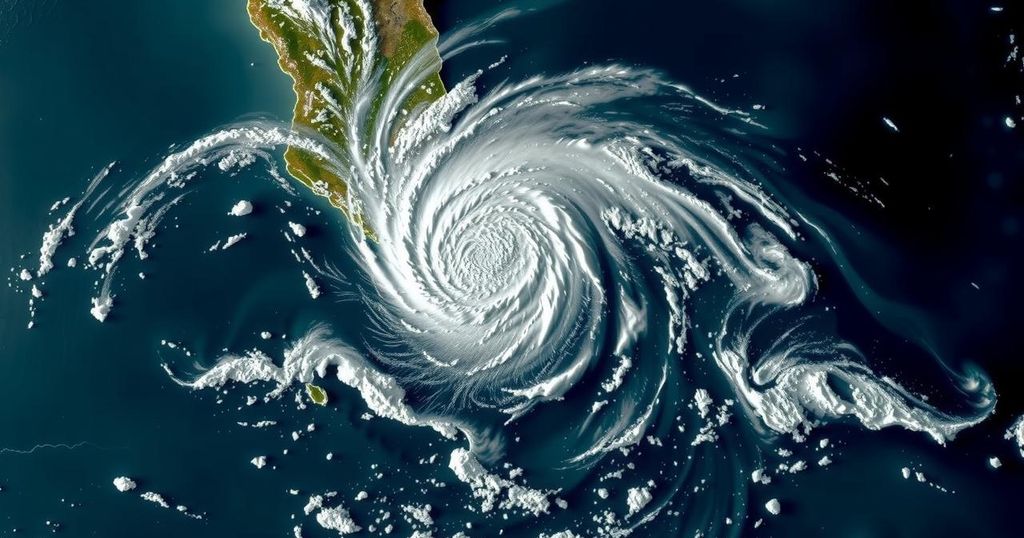Hurricane Rafael has downgraded to a Category 2 storm as it progresses through the Gulf of Mexico, with winds at 105 mph. The storm is expected to lose speed but will still impact regions with swells and flooding. Meanwhile, a separate low-pressure system is being monitored in the Leeward Islands with potential for heavy rainfall. Residents are urged to stay informed regarding storm developments.
Hurricane Rafael, which made landfall in Cuba as a Category 3 storm, is expected to weaken further as it moves westward through the southern Gulf of Mexico. According to the National Hurricane Center (NHC), as of Thursday morning, Rafael has downgraded to a Category 2 hurricane with sustained winds of 105 mph. It is projected to lose forward speed in the coming days as it continues its trajectory. Residents in Louisiana and other Gulf Coast states are no longer considered in the storm’s direct path and should primarily anticipate low-to-moderate coastal flooding. Meanwhile, Dry Tortugas, Florida, may experience tropical storm-force winds accompanied by heavy rainfall affecting western Cuba. The NHC advises residents in the southern and southwestern Gulf region to remain vigilant as swells are likely to occur across these waters later this week. Additionally, NHC forecasters are monitoring a low-pressure system causing disorganized showers and storms over the northern Leeward Islands, which may gradually develop as it progresses toward the west near the Greater Antilles. Regardless of any potential development, heavy rainfall is expected throughout the Leeward Islands, Virgin Islands, Puerto Rico, Hispaniola, and southeastern Bahamas until Saturday. The development chance for this system currently stands at 20% over the upcoming week.
Hurricanes are powerful tropical storms that can cause significant damage due to their high winds and heavy precipitation. The National Hurricane Center plays a critical role in tracking these storms and providing forecasts to mitigate impacts on affected regions. Hurricane Rafael illustrates the challenges posed by tropical storms as they transition from one landmass to another, in this case, from Cuba to the Gulf of Mexico. The dynamics of hurricane movement and weakening are essential for residents in potentially affected areas to understand, particularly as they prepare for storm impacts such as flooding or strong winds. Furthermore, tracking secondary weather systems is vital, as they can affect broader regions immediately after or during the main storm’s activity.
In conclusion, Hurricane Rafael has weakened but continues to pose risks as it moves through the Gulf of Mexico. While Louisiana and other nearby states are not expected to be directly impacted, residents should remain aware of coastal flooding risks. Additionally, the NHC’s monitoring of other weather systems indicates the potential for further storms affecting the Caribbean region. Preparedness remains essential during this hurricane season, emphasizing the importance of staying informed about storm developments.
Original Source: www.nola.com






